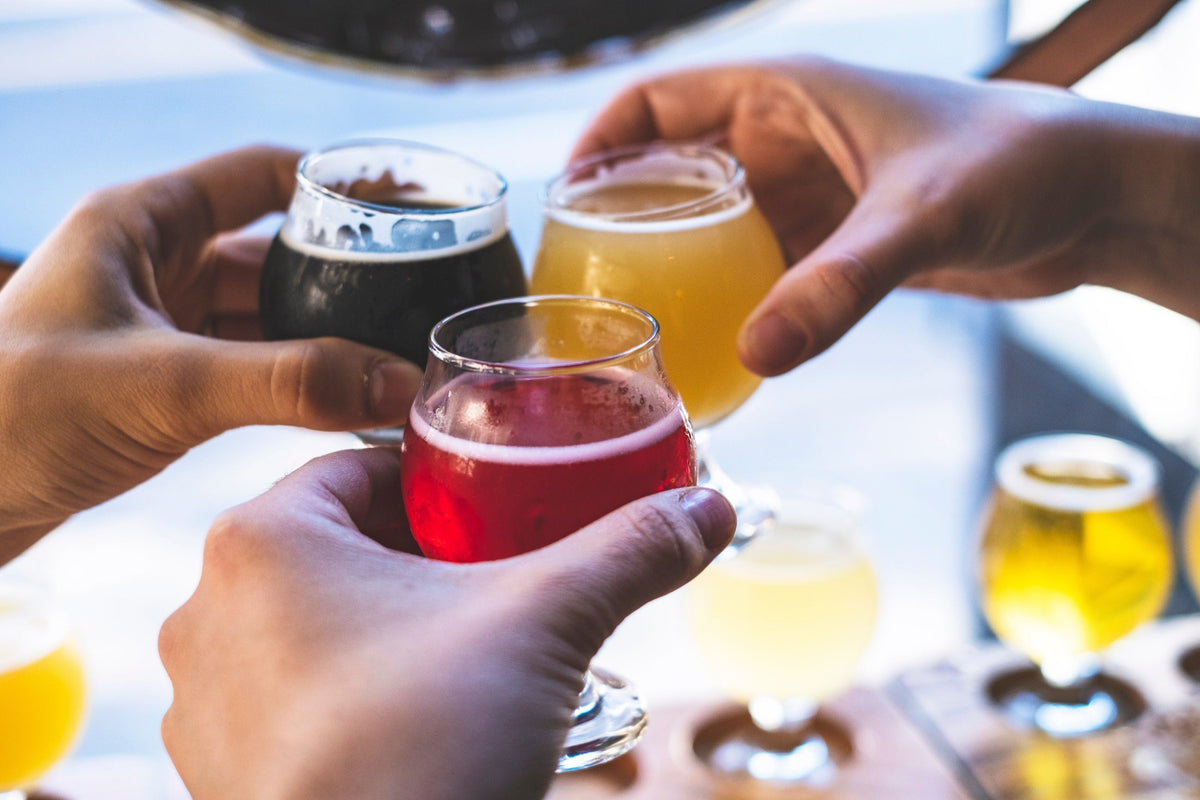
6 Lighter & Brighter Beer Choices for Spring
|
|
Time to read 4 min
|
|
Time to read 4 min
Warmer temperatures and sunnier skies are (almost) here, which for many means putting aside those big, malty winter warmers for something more sippable poolside.
And while for some, a six-pack of basic, light lager is a good enough choice for after mowing the lawn or just cooking out with the family. But spring sipping doesn’t necessarily have to boil down to a generic light Beer you might find at your corner gas station.
Those with more adventurous palates may want to search further for spring and summer choices. What does your palate prefer? If you want crisp and clean, there’s a Beer for you. If you like your beverages tart or fruity, there are Beers to satisfy that craving, too. Heck, some Beers don’t even taste much like many expect Beer to be when it hits the taste buds.
In other words, one of the best things about Beer is that there is virtually one for just about every preference; it’s just a matter of seeking it out and finding it.
That said, here are a few Beer styles you might keep your eyes out for this spring. It might change your afternoon out on the boat for the better.
This Beer style (which rhymes with “Rosa”) originated in the 13th century in Goslar, Germany, and is brewed with a minimal malt bill, reducing some of the alcohol content and sweetness. A gose tends to be a clean Beer, fruity-meets-tart and with some light herbal qualities and sometimes saltiness.
While the style all but died out by the middle 1900s, it has enjoyed a resurgence with the increased interest in craft Beer over the last couple of decades.
One great quality of gose Beers is that they usually fall under 5 percent alcohol by volume, which means you can enjoy several without ending up too inebriated. For a thirst-quencher like gose, that’s a good thing.
Examples to look for: Sixpoint Brewing Jammer Gose; Duclaw Brewing Gose O’s; Samuel Adams Raspberry Lemon Gose.
Another Beer style that originated in Germany, where they tend to like their Beers clean and crisp, Berliner Weisse is uniquely carbonated, giving it a clean, crisp mouthfeel. Taken by itself, it’s almost like drinking a white Wine spritzer, but traditionally, these Beers would be served with a choice of flavoring such as raspberry syrup or woodruff, a sweet herb.
Like goses, Berliner Weisse Beers usually are low in alcohol, sometimes as low as 3 percent, making the style a superb choice for warmer weather.
Also like goses, Berliner Weisses have enjoyed a rise in popularity in America concurrent with the craft Beer revolution. American versions tend to be pre-flavored, and there are quite a few variants to tease your palate with. They may not currently be as prevalent as other styles on this list, but give it time.
Examples to look for: Mikkeller Ich Bin; Night Shift Ever Weisse; Prairie Artisan Ales Prairie Weisse.
Three distinctive Beer styles brewed with wheat as a primary grain, making them immediate light choices for spring, include Belgian witbier, hefeweizen and American wheat ale. But while they share wheat as a common denominator, the styles differ in flavor profiles.
A Belgian wit, also known as a “Belgian white,” typically have light, soft bodies to go with fruity and herbal flavors, with Belgian yeast setting them apart; the prevalent version in America is Blue Moon, for example.
A hefeweizen often will have a fruity flavor, such as banana, with a soft, fluffy body and brightness. It’s often served with a lemon wedge.
The American version usually has a cleaner, slightly less fruity flavor profile, with a similarly light body. These also are often served with a lemon or orange wedge.
Consider them all reliable sippers for springtime.
Examples to look for: Bell’s Oberon; St. Bernardus Wit; Schneider Weisse.
The tradition of this Beer is steeped in social good times: A traditional Kölsch serving is a setting in which a server brings trays of tall, narrow glasses of this bubbly Beer to the table until those imbibing finally tell them to stop. Talk about, “One more.”
Sort of an ale/lager hybrid, Kölsch originated in Cologne, Germany, and it’s an eminently drinkable, crisp and light-bodied Beer that is typically under 5 percent ABV.
Examples to look for: Reissdorf Kölsch; Boulevard Brewing American Kölsch; MadTree Brewing Lift.
This one is a fairly new development, but the wild popularity of the India pale ale style has sparked all sorts of interesting creativity in brewing. The brut IPA is made with enzymes used in making brut Champagne, and this gives the Beer a similar, dry texture and crisp flavor by nixing virtually all the residual sugars. IPA lovers will still get some of the hop qualities they love, and even a bit of bitterness, but with a palate-friendly, crisp body.
The popularity of this Beer since it appeared in early 2018 has been growing quickly to breweries from coast to coast, meaning it is getting easier and easier to find. Even if you’re not a hop head, it’s worth trying simply for the novelty. Beware, however, as brut IPAs are just as alcoholic as regular IPAs. Handle with care.
Examples to look for: Sierra Nevada Brut IPA; Devil’s Backbone Brut IPA; Sixpoint Brewing Sparkler.
Yeah, this list is supposed to steer clear of the ubiquitous American light Beers, but there are plenty of examples of quality light lagers that don’t involve the mega-breweries. And these craft breweries who make their American lagers and pilsners also don’t buy up massive amounts of TV advertising featuring good-looking people in awkward social situations.
Step it up a notch for a true quality brew when you think light Beers; you won’t regret it.
Examples to look for: Founders Solid Gold; Oskar Blues Mama’s Little Yellow Pils; Stillwater Artisanal Ales Yacht.